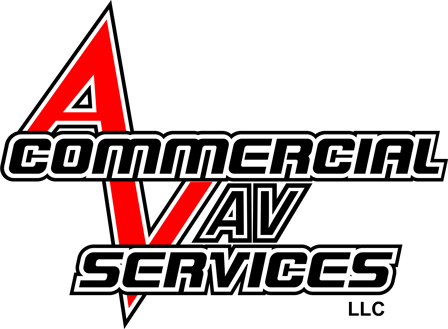Blog & News
The Installation Process: What to Expect for Commercial Satellite TV in 2024
Home » Commercial Audio Video Tips » Commercial Satellite TV Service » The Installation Process: What to Expect for Commercial Satellite TV
Table of Contents:
- Initial Assessment
- Equipment Preparation
- Actual Installation
- Testing and Troubleshooting
- Finalization and Handover

Initial Assessment
The initial assessment is fundamental for installing commercial satellite TV, involving a pre-installation survey to understand the business's unique requirements. Professionals evaluate the site meticulously to determine optimal equipment placement. Collaboration with the service provider ensures alignment between needs and solutions, exchanging crucial information on technical specifications and timelines. This phase sets the stage for a smooth installation process, facilitating successful implementation of tailored satellite TV services.
Pre-installation Survey
The pre-installation survey is a comprehensive examination conducted by qualified technicians to assess the suitability of the premises for satellite TV installation. During this phase, factors such as the building structure, line of sight to satellite positions, and potential obstructions are carefully evaluated. Advanced tools and equipment may be utilized to analyze signal strength and reception quality, providing valuable insights into the feasibility of the installation. Moreover, technicians may engage with stakeholders to gather specific requirements and preferences, ensuring that the proposed solution aligns with the business's objectives. By conducting a thorough pre-installation survey, potential challenges can be identified and addressed proactively, minimizing disruptions during the installation process and optimizing the performance of the satellite TV system.
Site Evaluation
Site evaluation is a crucial aspect of the initial assessment process, focusing on assessing the physical environment and logistical considerations associated with satellite TV installation. Technicians examine various aspects of the site, including access points, available space for equipment placement, and potential structural limitations. Additionally, factors such as cable routing, power sources, and compliance with regulatory requirements are carefully evaluated to ensure adherence to industry standards and best practices. By conducting a comprehensive site evaluation, technicians can develop a detailed installation plan that accounts for site-specific challenges and optimizes the efficiency of the installation process. This proactive approach minimizes the likelihood of delays or complications, ensuring a seamless transition to satellite TV services for the business.
Consultation with Service Provider
Effective
communication and collaboration with the service provider play a pivotal role in the success of the initial assessment phase. Business owners and managers can leverage the expertise of the satellite TV service provider to gain valuable insights into the technical aspects of satellite TV installation and explore available options tailored to their specific needs. The service provider can offer guidance on equipment selection, installation timelines, and ongoing support services, providing reassurance and confidence throughout the process.
Key Takeaway:
The initial assessment phase of commercial satellite TV installation involves conducting a pre-installation survey, evaluating the site, and collaborating with the service provider to lay the groundwork for a successful installation process tailored to the business's specific requirements.
Equipment Preparation
Preparing the necessary equipment is a crucial aspect of setting up commercial satellite TV. This phase ensures that businesses have the essential tools and devices ready for installation. By selecting and ordering the appropriate equipment, such as satellite dishes, receivers, and cables, companies can guarantee compatibility and optimal performance. Thorough inspection of the equipment upon delivery is essential to verify its quality and functionality, minimizing the risk of defects or issues during installation. Overall, meticulous preparation of the equipment lays the groundwork for a successful installation, enabling businesses to leverage satellite TV services efficiently.
Selection and Ordering
Businesses must consider factors such as signal strength, coverage area, and the number of channels required when choosing satellite dishes and receivers. Additionally, selecting high-quality cables and connectors is essential to maintain signal integrity and minimize signal loss. Once the equipment requirements are identified, businesses can proceed to order the necessary components from reputable suppliers or service providers. Businesses should avoid compatibility issues and ensure seamless integration of the satellite TV system into their existing infrastructure.
Delivery and Inspection
Upon delivery of the equipment, thorough inspection is necessary to verify its condition and functionality. Businesses should carefully examine each component for any signs of damage or defects that may have occurred during transit. Additionally, conducting functional tests on key components, such as satellite dishes and receivers, helps ensure that they are in working order and ready for installation. Any discrepancies or concerns should be promptly addressed with the supplier or service provider to facilitate timely resolution and minimize delays in the installation process.
Inventory and Organization
Organizing and inventorying the equipment is essential to streamline the installation process and avoid disruptions. Businesses should create detailed inventory lists that document each component, including serial numbers and specifications. Proper organization of equipment ensures that technicians can quickly locate and access the necessary components during installation, minimizing downtime and maximizing efficiency. Additionally, storing equipment in a secure and accessible location helps prevent loss or damage and facilitates easy retrieval when needed. By implementing effective inventory management practices, businesses can optimize resource utilization and ensure a seamless transition to satellite TV services.
Key Takeaway:
Effective equipment preparation involves selecting and ordering the right components, conducting thorough inspection upon delivery, and organizing inventory to streamline the installation process and ensure seamless integration of commercial satellite TV services.
Actual Installation
The installation process for commercial satellite TV marks a crucial stage following equipment preparation. It entails a series of intricate steps aimed at seamlessly integrating satellite TV services into the infrastructure. Beginning with the mounting and strategic positioning of satellite dishes to optimize signal reception, technicians meticulously progress through wiring and connection tasks to establish effective communication among system components. Subsequently, configuration and activation procedures are undertaken to tailor system settings and facilitate access to desired channels. Throughout this process, meticulous attention to detail and adherence to industry standards are paramount to ensuring optimal performance and customer satisfaction. A systematic approach guides businesses through this phase, enabling them to navigate the installation process smoothly and leverage satellite TV services efficiently.
Step 1: Mounting and Positioning
The first in the installation process is mounting and positioning the satellite dishes in optimal locations. Technicians utilize specialized equipment and tools to determine the ideal placement that ensures unobstructed line of sight to the satellites. Factors such as elevation, azimuth, and tilt angles are carefully considered to maximize signal strength and minimize interference. Additionally, environmental factors such as weather conditions and structural obstructions are taken into account to further optimize the positioning of the satellite dishes. By selecting strategic mounting locations, businesses can enhance the performance and reliability of their satellite TV systems, providing uninterrupted access to a wide range of channels.
Step 2: Wiring and Connection
Once the satellite dishes are mounted, technicians proceed to wire and connect the various components of the satellite TV system. This involves running cables from the satellite dishes to the receivers and other devices, ensuring proper connectivity and signal transmission. Attention to detail is crucial during this phase to avoid cable damage or signal loss, which could compromise the performance of the system. Technicians may utilize cable management techniques to organize and secure the wiring, minimizing clutter and ensuring a neat installation.
Step 3: Configuration and Activation
The final step in the installation process is configuring and activating the satellite TV system. Technicians work to customize the system settings according to the business's preferences, such as channel lineup and
audio/video settings. Additionally, activation procedures are undertaken to enable access to the selected channels and ensure proper functionality of the system. Technicians may conduct thorough testing to verify the system's performance and address any issues that may arise during the configuration process.
Key Takeaway:
The installation process for commercial satellite TV involves mounting and positioning satellite dishes, wiring and connecting components, and configuring and activating the system to ensure optimal performance and customer satisfaction.
Testing and Troubleshooting
Before finalizing the installation, thorough testing and troubleshooting procedures are essential to ensure the reliability and performance of the commercial satellite TV system. This phase involves rigorous assessments to verify signal strength, system functionality, and overall performance. Additionally, troubleshooting procedures are implemented to address and rectify any issues that may arise during testing, minimizing downtime and ensuring seamless operation. By prioritizing testing and troubleshooting, businesses can identify and resolve any potential issues before finalizing the installation, ensuring a smooth transition to satellite TV services.
Signal Testing
Signal testing is a critical aspect of the testing and troubleshooting phase, aiming to evaluate the strength and reliability of the satellite signal reception. Technicians utilize specialized equipment to measure signal strength and assess signal quality, ensuring optimal viewing experiences for customers. Factors such as signal-to-noise ratio and signal stability are carefully evaluated to determine the effectiveness of the satellite TV system.
System Performance Check
System performance checks are conducted to assess the functionality and effectiveness of all components within the satellite TV system. Technicians examine receivers, cables, and other hardware to ensure proper operation and connectivity. Additionally, system performance metrics such as channel switching speed, video quality, and audio clarity are evaluated to determine overall system performance. Any discrepancies or issues detected during the performance check are promptly addressed to ensure optimal performance and customer satisfaction.
Addressing Issues and Adjustments
During testing and troubleshooting, technicians may encounter issues or discrepancies that require immediate attention and resolution. This phase involves identifying the root cause of the issue and implementing appropriate corrective actions to address it effectively. Technicians may need to adjust system settings, replace faulty components, or reconfigure the system to resolve issues and optimize performance. Additionally, communication with the
satellite TV service provider may be necessary to seek guidance or assistance in addressing complex issues.
Key Takeaway:
Thorough testing and troubleshooting procedures are essential to ensure the reliability and performance of commercial satellite TV systems, allowing businesses to identify and resolve potential issues before finalizing the installation and ensuring seamless operation for end-users.
Finalization and Handover
As the installation process nears completion, the finalization and handover phase ensures that the commercial satellite TV system is fully operational and ready for use. This stage involves several important tasks to wrap up the installation and transition the system to the business owner or operator. Client orientation sessions are conducted to familiarize stakeholders with the operation and features of the satellite TV system, ensuring they can make the most of its capabilities. Documentation and sign-off procedures are completed to formalize the installation process and provide a record of system specifications and agreements. Additionally, arrangements for post-installation support are finalized to address any ongoing maintenance or assistance needs.
Client Orientation
Client orientation sessions are conducted to ensure that stakeholders are familiar with the operation and features of the commercial satellite TV system. Technicians provide comprehensive training on system functionalities, including channel selection, remote control operation, and troubleshooting procedures. Additionally, stakeholders are educated on best practices for maintaining and optimizing the performance of the satellite TV system.
Documentation and Sign-off
These procedures are essential to formalize the completion of the installation process and provide a record of system specifications and agreements. Technicians prepare detailed documentation outlining the installed equipment, configuration settings, and warranty information. Clients are provided with the opportunity to review and verify the accuracy of the documentation before signing off on the installation. This formal agreement serves as a reference for both parties and provides assurance that the installation has been completed to the agreed-upon standards.
Post-Installation Support Arrangements
Arrangements for post-installation support are finalized to address any ongoing maintenance or assistance needs that may arise. Service level agreements (SLAs) are established to define the scope of support services, response times, and escalation procedures. Additionally, contact information for technical support and customer service representatives is provided to facilitate communication and troubleshooting efforts. By ensuring timely and efficient support, businesses can mitigate potential disruptions and ensure continued satisfaction with their satellite TV systems.
Unlocking the Full Potential: Why Partnering with a Reputable Company Matters
Getting the services of a trusted Commercial Audio/Video Services Company like "Commercial AV Services" can significantly enhance the outcomes of both commercial audio/video installation and
DIRECTV Business TV Packages in Phoenix AZ. With their expertise and industry knowledge, these professionals ensure that every aspect of the installation process is executed with precision and efficiency. From initial assessments to final adjustments, they work tirelessly to tailor solutions that meet the unique needs of each business in
Arizona and beyond.
Frequently Asked Questions (FAQs)
Contact Us
Commercial AV Services
2432 W Peoria Ave Suite 1204 Phoenix, AZ 85029
(602) 626-5800















